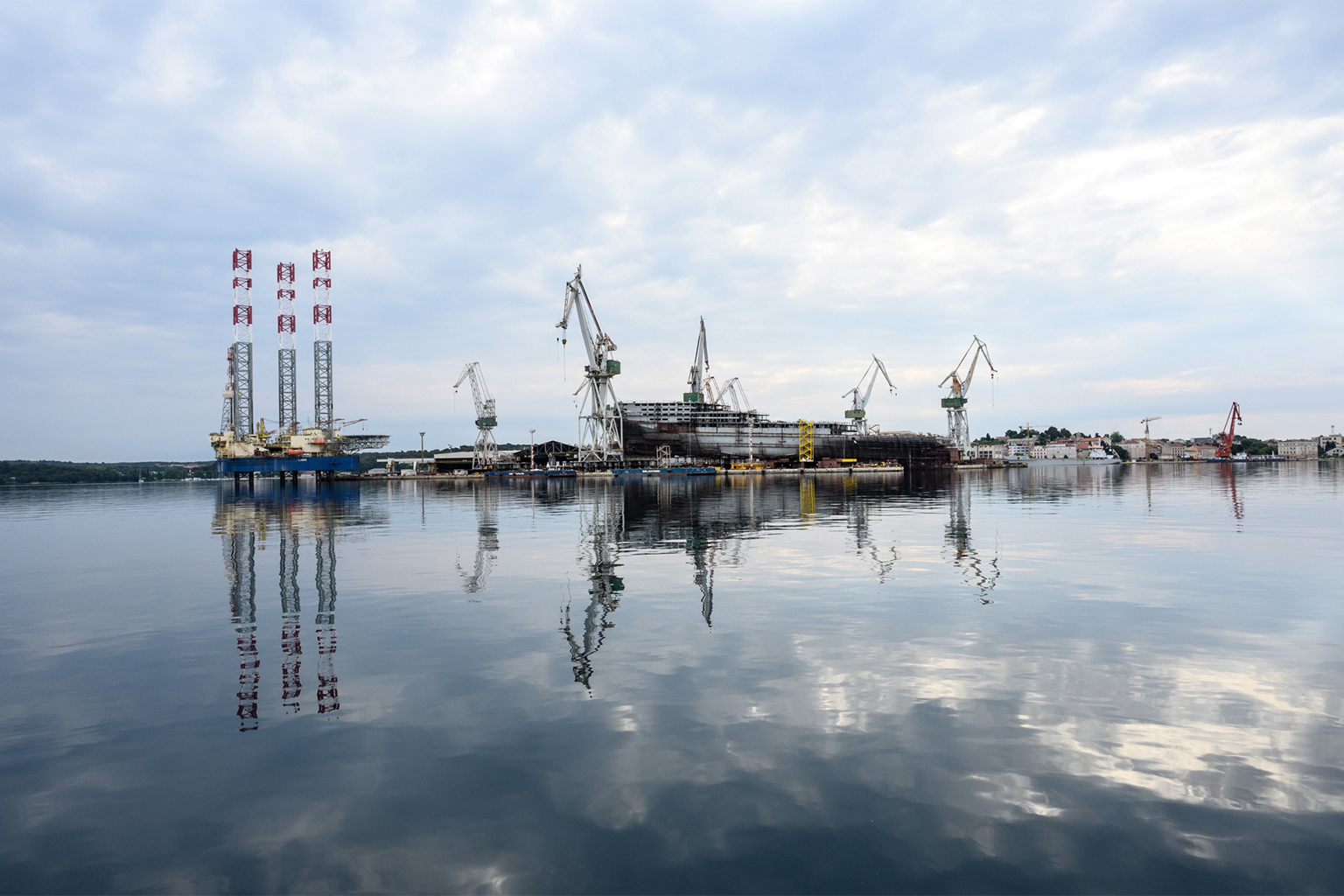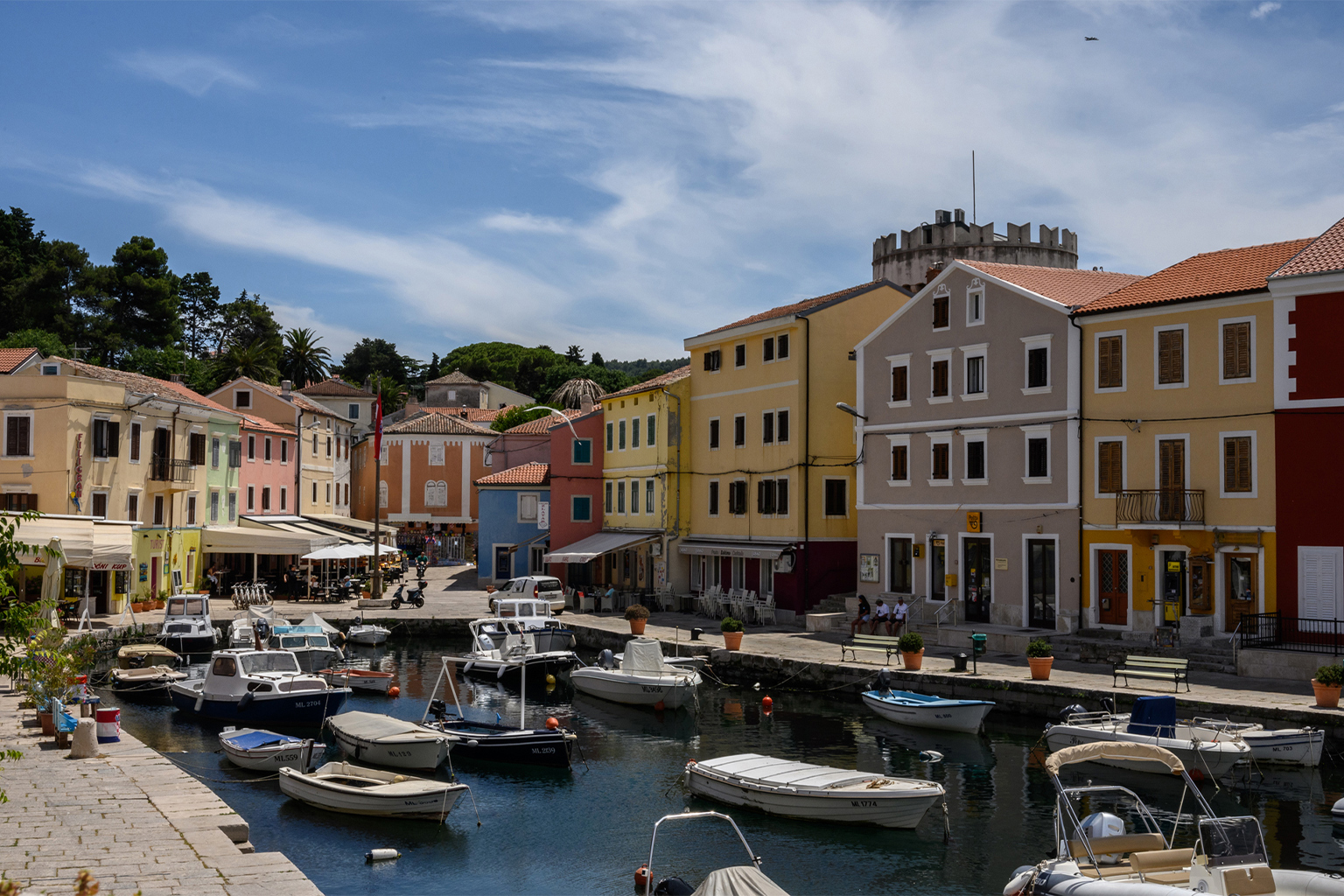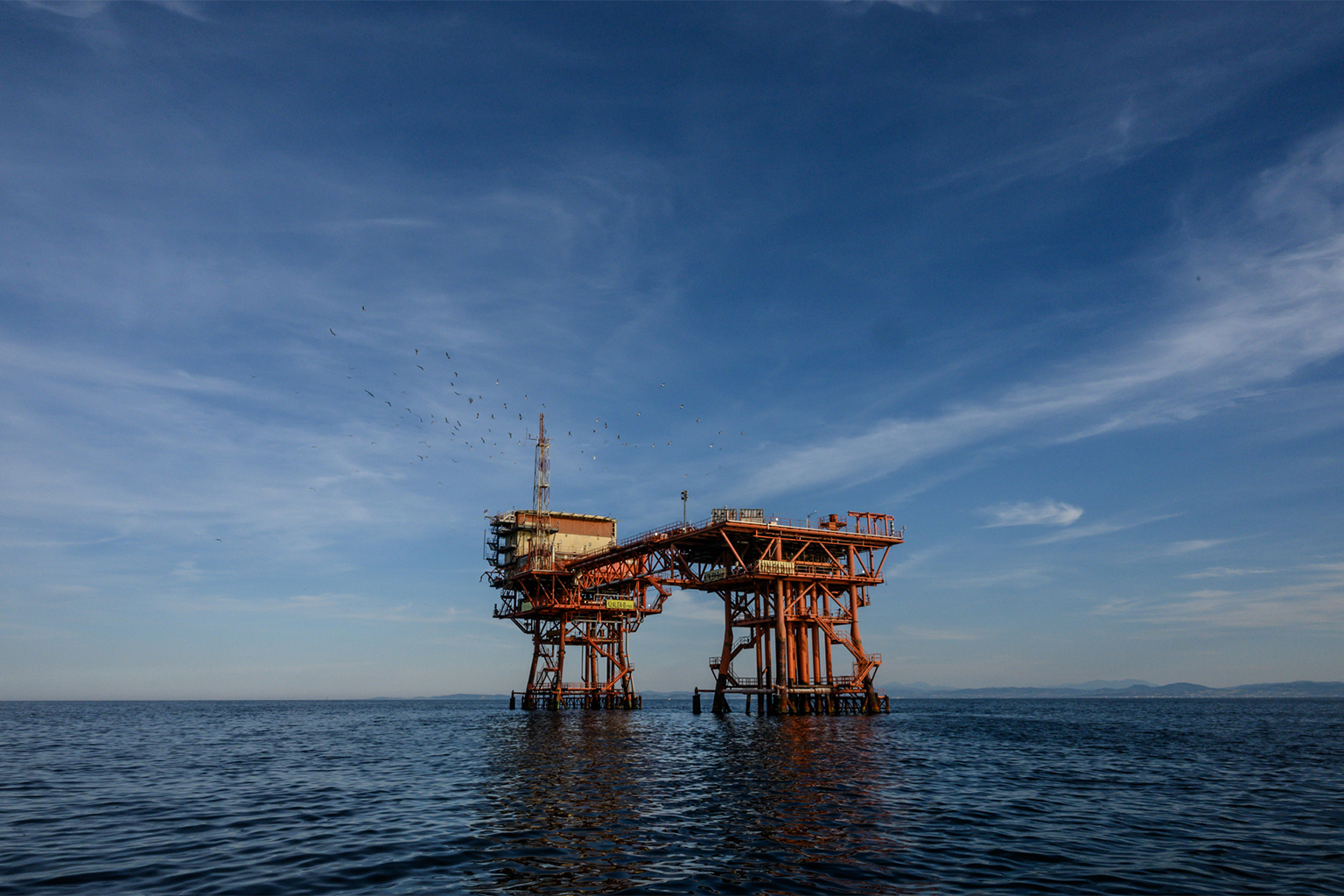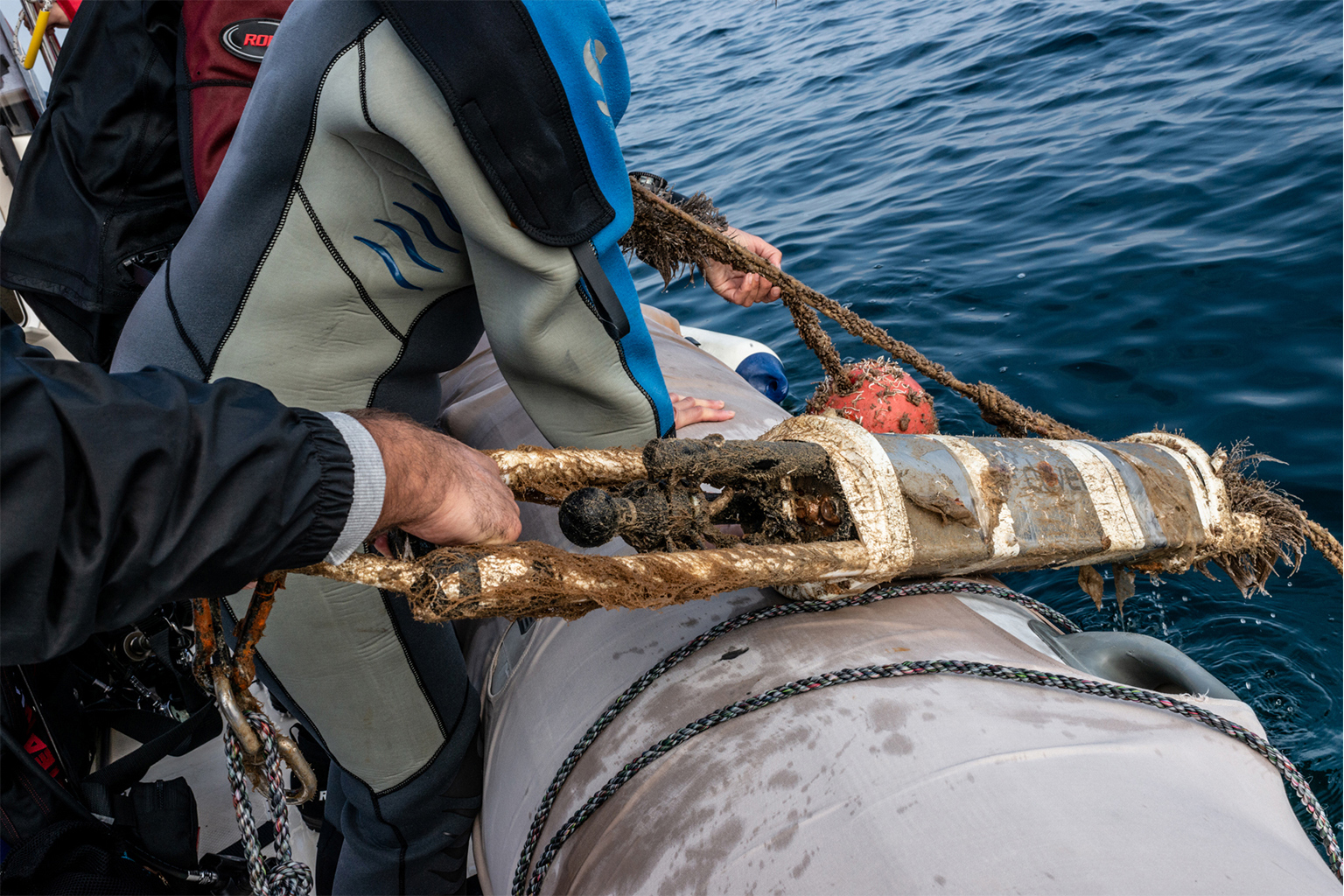Project maps soundscape of human noise in northern Adriatic and impact on marine life
Oct 19, 2021
- The bottlenose dolphin population of Croatia’s Lošinj archipelago is increasingly faced with problems from noise disturbance produced by boats, particularly in the summer tourist season.
- Noise pollution is known to impact a wide range of marine species, from turtles to tuna to cetaceans, but its long-term effects are still little-understood.
- The SOUNDSCAPE project that started in 2019 in the northern Adriatic Sea, between Italy and Croatia, is trying to better understand the problem at the regional level and identify solutions.
Croatia’s Lošinj archipelago is home to a large resident population of bottlenose dolphins (Tursiops truncatus), which suffered a decline between 1995 and 2003. Driving the drop, among other factors, is the growing presence of tourist pleasure boats, which in the summer season frequent the waters of the archipelago.
The presence of these boats represents a threat to the physical safety of dolphins, but also generates a disturbance more difficult to detect, but no less dangerous: noise.
Bottlenose dolphins use sound waves to orient themselves, move and hunt and communicate; they are known to emit a wide variety of sounds, which can vary greatly in frequency, duration, and timing, depending on geography. The transmission and cultural learning of vocalizations makes them similar to regional dialects.
Among the factors that influence these regional characteristics of dolphin sounds is the environmental disturbance that forces them into acoustic adaptation strategies. Studies have shown how, when exposed to sound pollution, dolphins can modify the frequency and timing of the sounds they emit. It’s similar to how we raise our voices when we try to talk during a concert.
In terms of conservation, the exposure of dolphins to high levels of noise disturbance can lead to communication divergences that split populations of the same species, creating an ethological and reproductive barrier. Soundscape affects vocalization transmission and reception, and ultimately survival, so it could be the strongest selective pressure for acoustic emissions. And while their importance often underestimated, geographic variability and vocal identity are actually very important elements in biodiversity conservation, according to the Convention on Migratory Species.

In bottlenose dolphins, studies have observed that a high density of vessel traffic induces changes in behavior: the average speed of movements is higher and animals move continuously, at the expense of the stops that are useful for feeding their complex sociality.
In a 2013 study published in Marine Pollution Bulletin, the archipelago of Lošinj was highlighted for its high presence of tourist boats, especially near the coast. The study noted how this contributes to an appreciable increase in sea ambient noise (SAN). This mainly depends on the cavitation phenomenon created by the propeller (creation and collapse of bubbles) and the rotation of the boat’s engine. Other factors are boat size, power, load and speed.
Grgur Pleslić, one of the authors of the paper, a senior researcher at the Blue World Institute of Marine Research and Conservation in Lošinj, also emphasizes the importance of sound for cetaceans.
“Cetaceans rely on sound for many important functions: navigation, communication, foraging, exploration of their environment and perception of threats; they are adapted to natural levels of underwater sounds coming from natural sources,” Pleslić said. “When anthropogenic noise is present in their habitat, it masks the sounds emitted or perceived by them, lowering the effectiveness of their hearing and consequently their ability to use sounds for its intended functions.”
The Blue World Institute of Marine Research and Conservation has been studying the dolphins of Lošinj for years, with the aim of better understanding the sources of disturbance and identifying possible solutions.
“The research in the Lošinj archipelago has been conducted continuously for over 20 years now and the local bottlenose dolphin population inhabiting this archipelago is one of the most intensively studied populations in the world,” Pleslić said. “Lošinj is a popular destination for nautical tourism and there is a great difference in the number of boats between winter and summer.”


Pleslić said the research results show that the differing number of boats by season means a difference in the intensity of underwater noise as well. “When these results are linked with data on bottlenose dolphins, a clear pattern occurs: bottlenose dolphins avoid areas of intense underwater noise.”
The impact of noise pollution is emerging as an important conservation issue. This year, WWF Hong Kong announced the production of the documentary Sea of Noise, which chronicles the problem of noise disturbance for the Chinese white dolphin (Sousa chinensis).
It’s not just dolphins that are negatively affected by underwater noise pollution. Changes of behavior have been observed in many other species, such as bluefin tuna (Thunnus thynnus) and brown meager (Sciaena umbra), the former of which moves to the seabed due to loud boat noise, and the latter of which vocalizes more. In several species of sea turtles, sound and light pollution can create serious problems during nesting. Also, for many species of marine mammals, anthropogenic underwater noise is a major threat.
Marta Picciulin is a biologist and researcher at Italy’s National Research Council, the CNR, who collaborates with the BWI. She has been studying underwater noise for years and is an expert in this still relatively new field.
“We have enough scientific evidence to say that the noise we make at sea is polluting, but its actual impact is still poorly understood,” Picciulin said in an interview. “While it is well recognized that the presence of boats affects the distribution of animals, little is known about the details of the long-term effects of noise on animals. In dolphins, a shift in vocalization, a change in frequency in response to loud noise, has been documented. The consequences of this are yet to be studied.”
She added that the great diversity of marine fauna makes this much more complex.
“Mollusks, crustaceans, fish, mammals and many other groups hear differently and respond differently to sound,” Picciulin said. “For example dolphins do not hear low frequencies, while fish are very sensitive to them, the range of auditory responses is enormous and consequently also the sounds that we can consider impacting vary from species to species.”
Picciulin said that in terms of legislation, an EU request for long-term monitoring of two low-frequency noises could lead to change. She added, though, that this would be “only the starting point to develop studies that can understand how and how much this noise is harmful and consequently establish measures to mitigate and solve the problem.”


Sounds of the sea and anthropogenic silence
The sea is a noisy place; sound propagates faster in water than in air. For billions of years, aquatic organisms have evolved, shaped by the characteristics of their environment, which has made hearing and sound communications central elements for social life, reproduction, the search for food, and several other vital functions.
Experts said the advent of artificial sounds at sea — those produced by boat engines, sonar, offshore platform excavation work, resource exploration, and any other anthropogenic activity — has disrupted the underwater soundscape. The consequences for organisms beyond just dolphins are only now beginning to be understood.
Noise pollution is now recognized as one of the main threats to marine biodiversity, and the study and mitigation of the problem are becoming a priority in conservation policies.
Unlike other forms of pollution, however, noise pollution is relatively easy to address: it ends the moment we stop the emission of the disturbance. The same can’t be said for plastics or chemical pollutants, for instance, which, once they’ve entered the trophic chain, will take generations to disappear.
This is why research projects on this relatively new topic are able to bring concrete and immediate benefits to marine health.
Between 2019 and June 2021, “SOUNDSCAPE: Soundscapes in the Northern Adriatic Sea and their Impact on Marine Biological Resources,” a project by Italy and Croatia, took place in the northern Adriatic Sea, aiming to improve the knowledge of anthropogenic noise pollution in the region and provide useful elements for the creation of a management plan for the problem. The project was led by the Institute of Oceanography and Fisheries (IOF) of the Croatian city of Split, and has as local partners the Croatian Ministry of Environment and Energy (MEE), the Blue World Institute of Lošinj, and the Institute for Public Health (TIPH) of the city of Rijeka (TIPH). Its partners in Italy are the Environmental Protection Agency (ARPA) for the Friuli-Venezia Giulia region, the CNR’s Institute of Marine Sciences (ISMAR), the Cetacea Foundation, and government of the Marche region.
For more than a year, starting in February 2020, the project scientists submerged nine hydrophones at varying depths in the northern Adriatic Sea.
“Thanks to sampling carried out 24 hours a day for an entire year, for the first time we are able to build a detailed map of underwater noise in the northern Adriatic,” said Fantina Madricardo, a physicist at CNR-ISMAR in Venice.

“These samplings will allow us to have a clearer view of the underwater soundscape and to learn more about the impact of anthropogenic noise on the species that inhabit the Adriatic, particularly the project’s target groups, which are bottlenose dolphins and turtles.”
The project began just before the pandemic, which allowed the hydrophones to record an almost unrepeatable condition of “anthropogenic silence” — a period during which human activities were reduced to a minimum by lockdown.
“Anthropogenic noise never stopped entirely, but the decline was much more drastic than expected,” Madricardo said. “To this day, vessel traffic and other activities haven’t really fully resumed, so we don’t really have a comparison.”
Madricardo added, though, that by comparing the data collected during the lockdown alongside 2018 data from previous samplings conducted in the Venice lagoon, also in the northern Adriatic, “we can see a really huge difference.”
“From the data collected, we are developing guidance for stakeholders,” Madricarco said, “a set of measures designed based on the population distribution of the target species and their noise thresholds, that can help solve the problem sooner and better.”
Citations:
Luís, A. R., May-Collado, L. J., Rako-Gospić, N., Gridley, T., Papale, E., Azevedo, A., … Dos Santos, M. E. (2021). Vocal universals and geographic variations in the acoustic repertoire of the common bottlenose dolphin. Scientific Reports, 11(1). doi:10.1038/s41598-021-90710-9
Marley, S. A., Salgado Kent, C. P., Erbe, C., & Parnum, I. M. (2017). Effects of vessel traffic and underwater noise on the movement, behaviour and vocalisations of bottlenose dolphins in an urbanised Estuary. Scientific Reports, 7(1). doi:10.1038/s41598-017-13252-z
Rako, N., Fortuna, C. M., Holcer, D., Mackelworth, P., Nimak-Wood, M., Pleslić, G., … Picciulin, M. (2013). Leisure boating noise as a trigger for the displacement of the bottlenose dolphins of the Cres–Lošinj archipelago (northern Adriatic Sea, Croatia). Marine Pollution Bulletin, 68(1-2), 77-84. doi:10.1016/j.marpolbul.2012.12.019
Sarà, G., Dean, J. M., D’Amato, D., Buscaino, G., Oliveri, A., Genovese, S., … Mazzola, S. (2007). Effect of boat noise on the behaviour of bluefin tuna Thunnus thynnus in the Mediterranean Sea. Marine Ecology Progress Series, 331, 243-253. doi:10.3354/meps331243
Picciulin, M., Facca, C., Fiorin, R., Riccato, F., Zucchetta, M., & Malavasi, S. (2021). It is not just a matter of noise: Sciaena umbra vocalizes more in the busiest areas of the Venice tidal inlets. Journal of Marine Science and Engineering, 9(2), 237. doi:10.3390/jmse9020237
Štrbenac, A. (2017). Overview of underwater anthropogenic noise, impacts on marine biodiversity and mitigation measures in the south-eastern European part of the Mediterranean, focussing on seismic surveys. OceanCare. Croatia and Switzerland. Retrieved from the OceanCare website: https://www.oceancare.org/wp-content/uploads/2018/01/edx_final_Regional-Overview_12.pdf
Banner image: Bottlenose dolphins around the island of Lošinj, Croatia. Image by Rob Schleiffert via Wikimedia Commons (CC BY-SA 2.0).